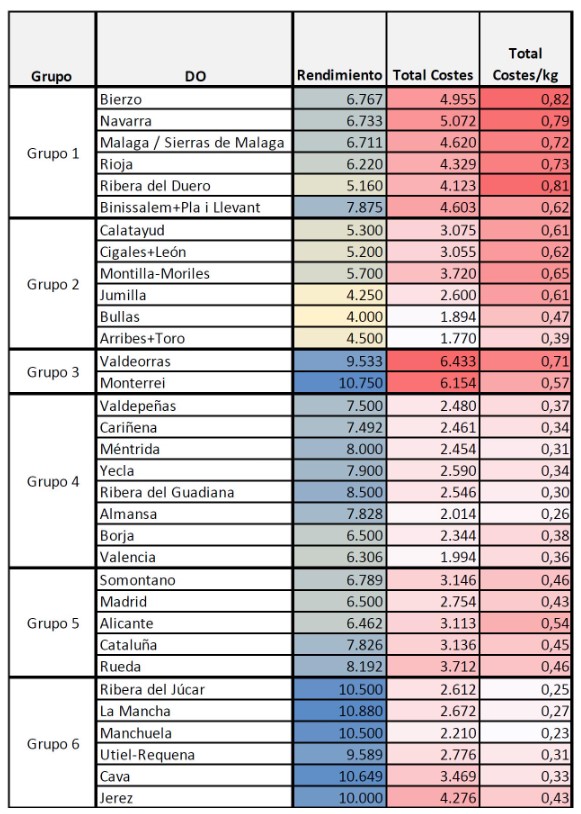
OIVE presents the second phase of the ‘Study of grape production costs for the production of wines in Spain’
The Interprofessional of Wine of Spain (OIVE) has recently organized an online seminar to present the novelties of the Law of the Food Chain and two tools available to the sector: the results of the extension of the study of costs of production of grapes for winemaking and the APP Gesvid for the individualized calculation of them.
The objective of this session, on the eve of the start of the 2022/23 wine campaign, is to continue the information improvement activities that OIVE has been developing over the years, as highlighted by its president, Angel Villafranca, in charge of welcoming the attendees.
Villafranca stressed that having the best sectoral information, as well as management tools, is not only essential for improving the operation and greater profitability of the entire value chain of the sector, It is also one of the axes of action of the strategic plan that the Spanish Wine Interprofessional presented on 20 July at the Ministry of Agriculture, Fisheries and Food (MAPA).
The novelties of the Law of the Food Chain and the implications it will entail in the wine sector have centered the first presentation of the day, by José Luis Palma, lawyer of the Council of State and Partner of Gómez-Acebo & Pombo.
This new regulatory scenario has also highlighted the usefulness of the standard contracts for the purchase/sale of grapes and wine promoted by OIVE and approved by MAPA. During the presentation, Palma has recommended the use of these voluntary contracts, which seeks to provide greater transparency to the operation of the sector and order transactions between actors in the wine value chain.
Second phase of the study of grape production costs
The day has continued with the presentation of the second phase of the ‘Study of Costs of grape production for the production of wines in Spain’. A work prepared by the Department of Economics and Social Sciences of the Polytechnic University of Valencia, under the direction of Professor José Miguel Carot.
In this new part, the scope and sample have been expanded to have more reliable and precise aggregated data based on the methodology already approved and tested in the first phase of the study.
The information collected is grouped by type of cost, geographical location (Autonomous Communities) and type of crop, since it shows that the costs in viticulture are complex and have a very high variability, both by area and by type of crop.
In addition, the study identifies other factors that would influence these internal costs, such as the profile of the winegrower, the destination of the production (quality of the grapes), the age of the vineyard, its variety, the driving and management system; and also external factors such as environmental conditions, which vary from campaign to campaign and from plot to plot. All this reflects the variety and richness of the Spanish wine sector.
Total costs, per kg and average yield of the designations of origin included in the analysis

In addition, the application Gesvid (http://Gesvid.App) developed by OIVE has been presented with the aim of facilitating the collection and calculation of costs individually. The new tool, designed for mobile devices, has been presented by Alejandro de Blaas, director of Plataforma Tierra, a company selected by OIVE after a public tender to carry out its design. Gesvid will be made available to the sector next August with a trial period.
Susana García, director of OIVE, closed the day by saying that “OIVE is in itself a tool available to the whole sector”. Therefore, he stressed that the organization will continue to seek to meet the needs of the sector both in the markets “where we want to sell more and better”, and in the internal functioning of the sector itself, looking for a better distribution of profitability along the value chain.
SOURCE: SEVI.NET
